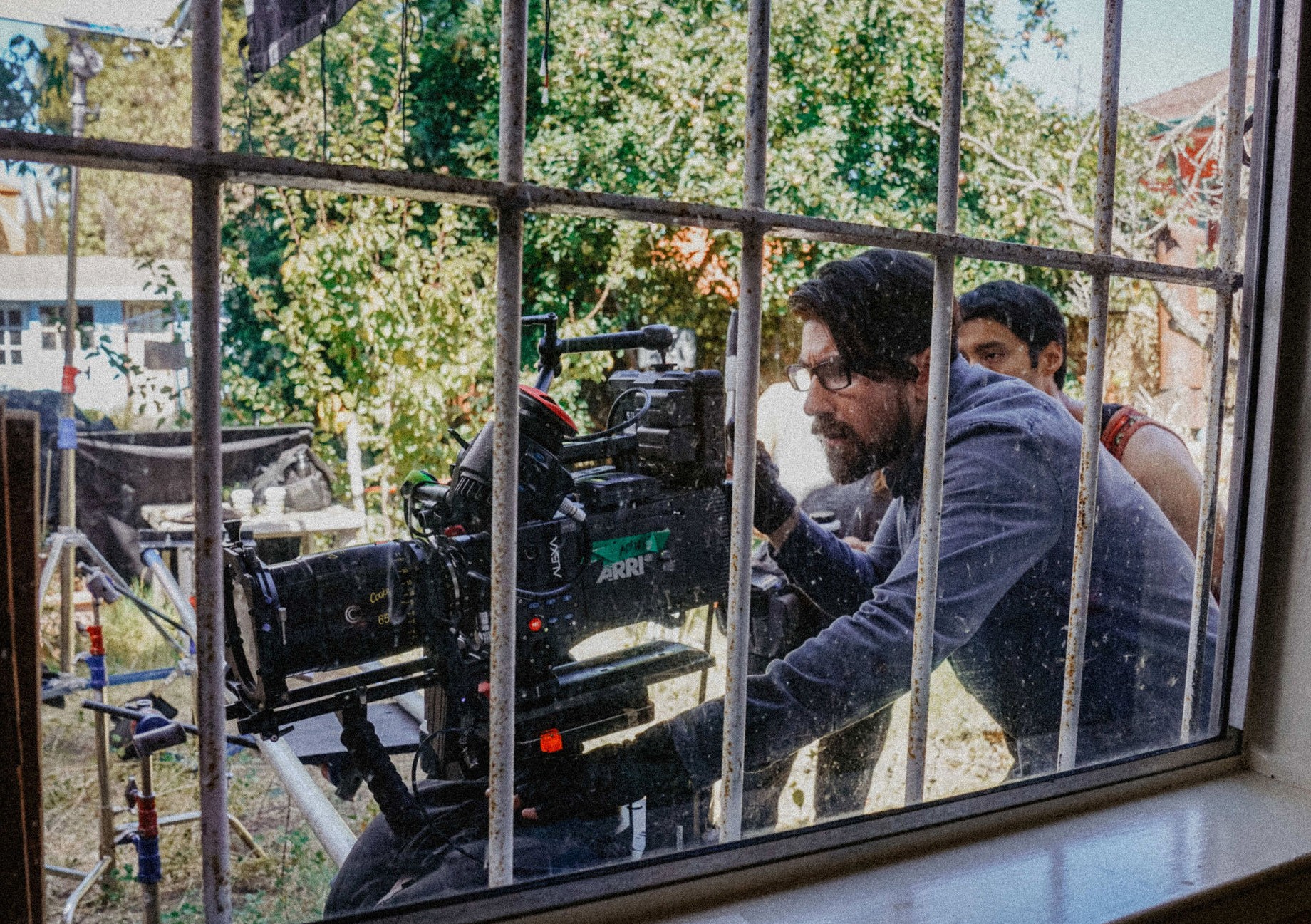
Today we’d like to introduce you to Andrés Gallegos.
Hi Andrés, we’d love for you to start by introducing yourself.
I was born in Chile in 1986. I think I discovered my passion for filmmaking at an early stage of my life. The world of art was not very close to me or my family, however, I kind of knew that I had some form of artistic sensibility. My curiosity about the world of films was always present, I remember that my favorite show on TV was about behind the scenes of movies. Movie Magic, I think it was called. Once my parents had access to purchasing a Video Hi8 camcorder, that was the moment when everything started. I was 11 years old, and with that camcorder, I began making stop-motion videos and diverse sorts of videos with my brother and friends.
In 2003, I went to college to study audiovisual communications at Uniacc in Santiago de Chile, and here is when I discovered the art of cinematography, and that was it for me, there is no more search, cinematography was going to be the thing I will do for the rest of my life. Right after getting that degree, I was awarded Best Cinematography at FESANCOR (Santiago Short Film Festival) Festival for “Axion”, when I was just twenty-two years old.
Motivated by my passion for cinematography, I started trying to pursue a graduate degree, and in 2016 I was awarded some funding by the National Audiovisual fund of Chile to study for a Masters in Fine Arts program. So, I moved to California to get my MFA in Cinema at San Francisco State University.
In 2017, I went to Vietnam to shoot the feature documentary titled “The American War”, directed by Daniel Bernardi, which got numerous awards. In 2018, I shot another feature documentary on WWI, traveling to France, Belgium, Hawaii, New York, and Pennsylvania – that one you can find on Amazon Prime. That same year, I went to Israel to shoot “Objector”, a feature documentary directed by Molly Stuart.
In 2019, I received the Best Cinematographer Award at the Oakland Short Film Festival, and I also received a nomination for the ASC (American Society of Cinematographers) Heritage Awards for my cinematography work on the film Shoe Shiner. That same year, the short film A handful of Cherries won Best Cinematography at the La Serena International Film Festival.
In 2020, the film Shoe Shiner wins Best Cinematography at the International Festival of Cinematographic Arts of San Cristobal de las Casas. Overall, my work has been screened at diverse festivals like Cannes, Raindance, Málaga, Mill Valley, Valdivia, and more.
Alright, so let’s dig a little deeper into the story – has it been an easy path overall and if not, what were the challenges you’ve had to overcome?
It has definitely not been an easy process, the most challenging thing was the entire immigration process, and also the fact that I had to start a career almost from scratch since I had no connections in the United States. However, I am very grateful for just having the opportunity to have been able to study here in the United States and meet a great group of people who have helped me continue with my passion for making films. Thank you all!
Thanks – so what else should our readers know about your work and what you’re currently focused on?
I work as a cinematographer on narrative films, documentary films, and commercial projects. When approaching a film project, my way of operating always consists of immersing myself in the story, understanding the conflict in question, and understanding very clearly the trajectory or dramatic arcs of each of the characters from the beginning. I dive into the practicality of the story and how it moves forward, but most importantly, into the characters’ psychology and understanding what is behind their decision-making process.
My creative process consists of creating and designing my visual approach from an internal place of the character. It lies in creating images and a visual scheme from a place that analyzes not only what the story offers but the complex world of the character’s psychology. From there, in conjunction with the director, I make creative choices regarding the use of light, type of framing, how to move the camera, optics, aspect ratio, and so on.
Personally, I believe that cinematography is a discipline that accompanies a main vision, which is the vision of the director. With all the elements that cinematography offers, I am always at the service of that vision.
Where we are in life is often partly because of others. Who/what else deserves credit for how your story turned out?
Certainly, one of the people to whom I owe great recognition is Constanza Hevia H., my wife. She has supported my career from the beginning, but the most important thing is that she is a photographer with a very critical eye and a beautiful sensibility, I think that being by her side keeps me growing artistically.
At the same time, making progress in an artistic discipline such as cinematography is based on interpersonal collaboration. Every piece I work on is a reflection of an entire team behind the camera, lighting, set design, costumes, makeup, sound, and of course, what ties it all together, the director’s vision. Cinema is a collaborative art and cannot be conceived in any other way. I am very grateful for having a great relationship with my camera, grip, and lighting crew. Cheers team!
Contact Info:
- Website: http://andres-gallegos.com/
- Instagram: https://www.instagram.com/andresgallegos_dp/
- Facebook: https://www.facebook.com/andresgallegos.y/
- Linkedin: https://www.linkedin.com/in/andresgallegosy/
- Other: IMDB www.imdb.com/name/nm3672514




 Image Credits
Image Credits
Image 9_by Sarah Wells Image 10_by Mogli Maureal Image 11_by Mogli Maureal Image 14_by Mogli Maureal Image 19_by Mogli Maureal Image 20_by Mogli Maureal











